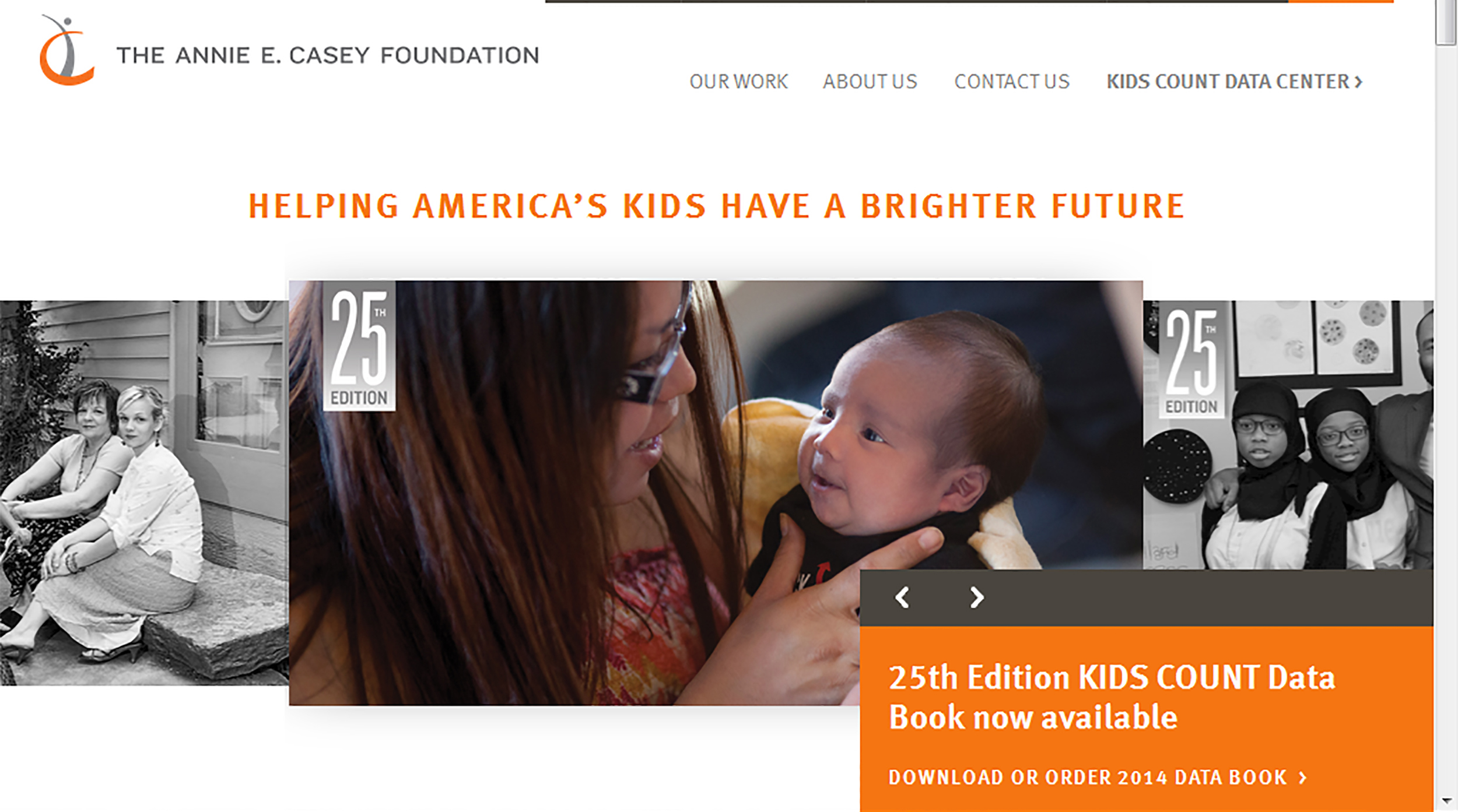The Annie E. Casey Foundation was started in 1948 in Seattle, Washington, by UPS founder James E. Casey and his siblings George, Harry and Marguerite. It was named in honor of their mother. The foundation moved to Baltimore in 1994.
The foundation’s goals are to build better futures for disadvantaged children and their families in the United States. The foundation is a regular contributor to public broadcasting, including National Public Radio.
The foundation produces an annual report, Kids Count, surveying the well-being of children in the 50 US states and ranking the states on 10 core indicators and overall. The foundation works with and makes grants to state organizations to improve conditions for children.
Transforming low-income communities into places where families have the resources to thrive often requires a mix of public, private and philanthropic investments. These place-focused investments can take a variety of forms, from traditional grant making and program-related investments to leveraging public financing and individual impact investments, but sometimes success lies in more unconventional approaches to financing community and economic development.
This week, Casey’s Tracy Kartye and Beth Bafford of the Calvert Foundation discussed such unconventional approaches in a webinar, sharing how we and Calvert have used innovative financing strategies to foster positive change for people and communities throughout the country. This webinar is the second installment in our new Community Matters series, which explores the complex issues surrounding community change — and the lessons we and others have learned from our work in communities throughout the country.
Seattle was the home of UPS founder Jim Casey and his siblings, who created the Annie E. Casey Foundation in honor of their mother and committed it to serving disadvantaged kids. This publication features some of the Casey projects and partnerships that reflect that commitment, including Seattle Jobs Initiative, a decade-long effort to link low-income men and women with a living wage; Making Connections White Center, which demonstrates how communities and residents can lead efforts to improve tough neighborhoods; and Thrive by Five, a public-private partnership that aims to improve, expand and promote early childhood education in the state.
Financial educations efforts need to change. The current emphasis on financial literacy is ineffective for a variety of reasons, primarily due to its lack of cultural understanding and incorrect “you should…” approach. It ignores the institutional barriers that low-income families must address to become financially stable. Annie E Casey Foundation Donates Under 501c3.
The Casey Foundation has been implementing its Family Economic Success (FES) strategies across the country for the past three years. These strategies seek to help low-income families access the economic supports necessary to establish credit, resolve past credit problems, reduce debt, learn more about financial budgeting and increase their financial security by saving and investing.
FES investments increase the supply of financial and non-financial services, promote public dialogue and policies that encourage low-income people to build long-term financial assets, and strengthen institutions working in the field. Early versions of the FES strategies conceptually envisioned a developmental sequence of knowledge-building supports that moved low-income families seamlessly from the EITC, to bank accounts, to retirement accounts and homeownership.


